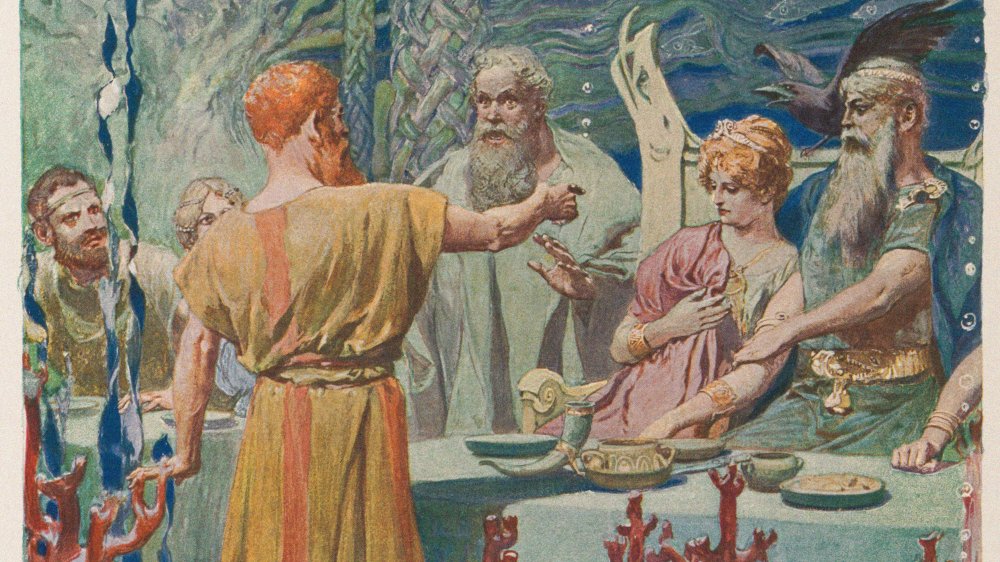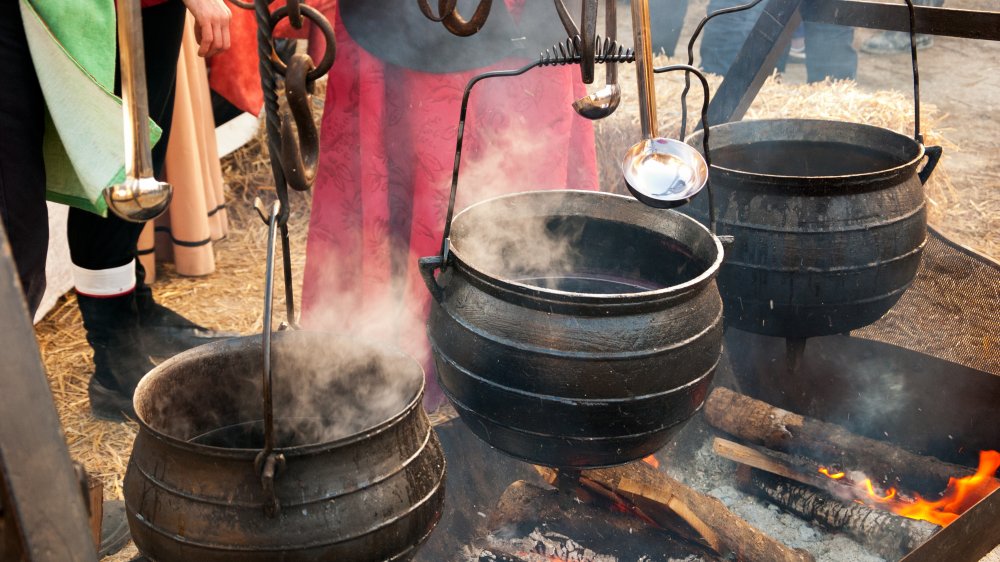Everything You Knew About Viking Diets Is A Lie
Over the centuries, Vikings have been subjected to more stereotypes than you can shake an axe at. While Viking society has often been painted as a bunch of cartoonish, bloodthirsty, barbarian "pagans" with horned helmets, real Viking society was far more nuanced, deep, and interesting than you've been taught to think. While the Vikings certainly were warriors, who did set out on boats, violently raided villages, and took slaves, the reality of Viking life — as is almost always the case, with anything in history — was far more complex than it's often presented.
One example of this stereotyping in action? The Viking diet. Because while your image of a Viking dinner probably involves a group of burly folks standing around a massive, stone roasting pit of hot coals, as a red piece of meat glistens from above the fire, historical remnants actually show that, most likely, Vikings weren't too big on roasting their meat. If anything, they preferred to ... well, boil it into a stew. That certainly changes the visuals, and it's only one part of the lean, mean, hyper-efficient machine that defined an everyday Viking's culinary habits.
Not quite the Viking meal you expected
Vikings didn't have too many ingredients to work with. So, their diet — while not perfect — was exceptionally efficient and healthy, with the poorest Vikings eating far better than English peasants during the Medieval era, according to according to History. Which is ironic, given that the National Museum of Denmark points out how the English actually mocked the Viking diet (and alcohol consumption) as being "gluttonous." But hey, when it comes to how unfairly the English characterized the Vikings, they did have an agenda.
Anyhow, perhaps the least surprising part of the Viking diet, given their seafaring ways, is that it involved plenty of fish. In general, meat was consumed daily, by all classes of society, though the slaughtered animals in question weren't just the cows, pigs, and goats you might expect, but also horses and bears. Remember, this meat wasn't fried: instead, it was put into a boiled stew, called skause, which was continually cooked over days, and eaten with bread composed of grains, beans, and sometimes tree bark. As for greens? Don't worry, Vikings kept it balanced, though the veggies and fruits, they ate, from white carrots to wild apples, wouldn't seem familiar to you today. For flavor, they used seasonings such as cumin and horseradish.
Nonetheless, eating in any era before modern sanitation always carried some risk. As History notes, archaeologists have dug into Viking sewers, and generally determined that intestinal parasites were quite common. Whoops, there goes your appetite.

